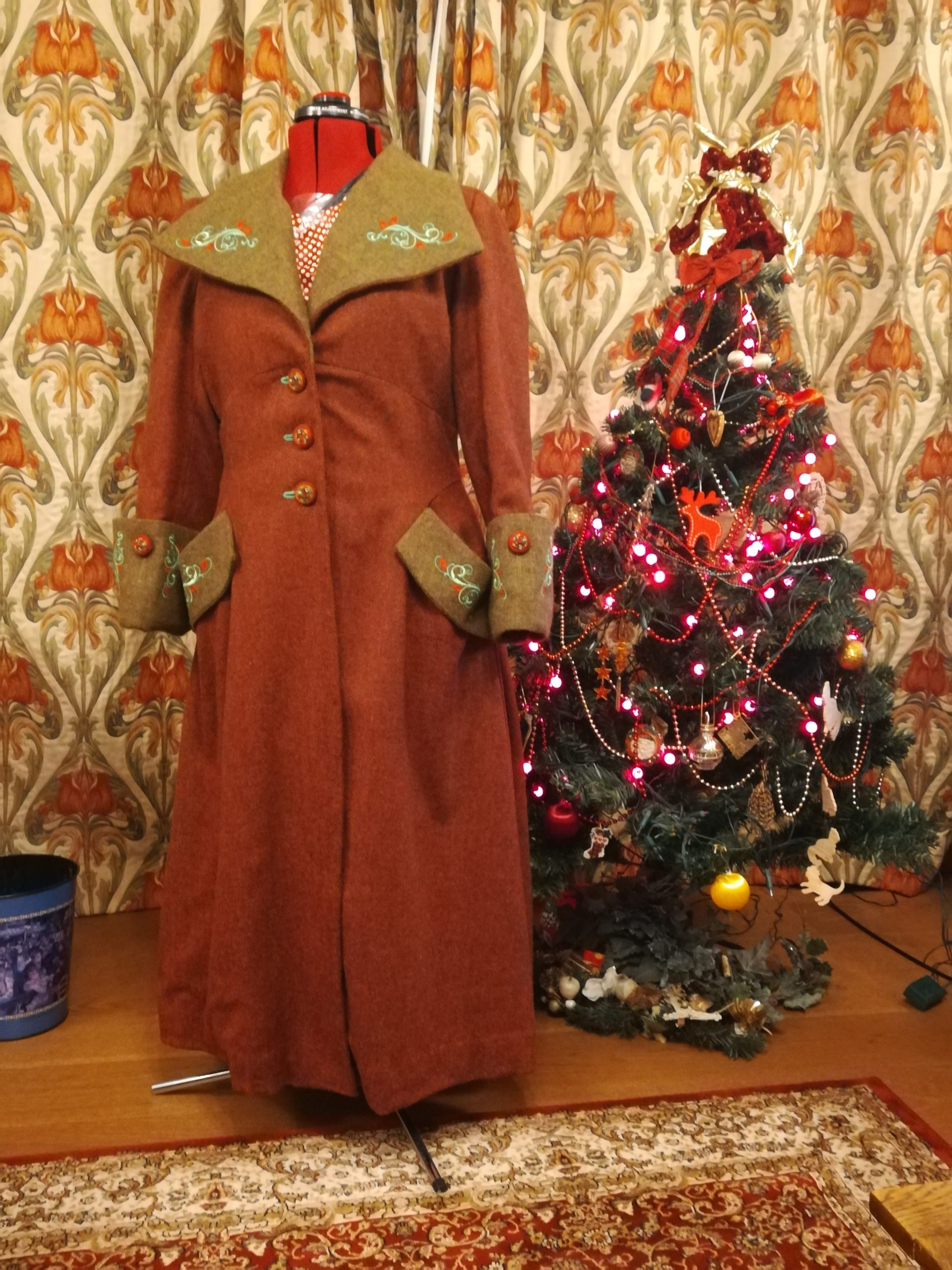
I knew that I was going to have to make this late 40’s Dior New Look style coat as soon as I saw it, but I decided to add some large 18th Century style cuffs into the sleeves, which was a relatively simple pattern hack – I did not need to substantially alter the main sleeve pattern pieces .
As I have an embroidery machine, I also decided add machine embroidery to the cuffs, lapels and pocket welts, which made the pre-planning more complex, as this had to be completed before I could cut out the fabric pieces.
I used some herringbone weave medium weight pure wool from Yorkshire for the main fabric, and a plain weave wool in a similar weight for the contrast pieces – and used heavy weight sew in interlining, but with some extra sections in the bodice back in soft flannel. A note here – the pattern fully interlines the front facings, but not the skirt front pieces – and after I had ‘completed’ it, as shown in the photo, I decided that it really did not look right, so I partly dismantled it and put further interlining on to the coat front pieces, which acted as an underlining for the hem. So unless you are going to make this up in quite heavy coating fabric, I would strongly recommend buying extra interlining, and mounting the whole coat front accordingly to give it the necessary smooth line.
I am 5’6″ tall, and the finished coat is ankle length on me, so that is also something to bear in mind, as if you want it shorter, you may well be able to save on fabric.
In some ways, making it up was fairly straightforward, but there are a lot of pieces to cut out and mark up by the time you have done main fabric, lining pieces and interlining. The pocket welts are a bit of a challenge, as they are designed to stand away from the garment body a little, which means sewing them into place is tricky. And because the flared coat skirt pieces do stretch after hanging, more so than the lining, it took more than one attempt to get the hems right.
Inevitably, this takes quite long time to assemble, which could be daunting, but the final result is very flattering and very stylish – I don’t think I have ever worn it in public without someone making compliments about it, but it it is definitely not something to tackle in a hurry, or as a first attempt at a coat. The pattern instructions are adequate rather than comprehensive, as is usual for the major pattern brands, so I did benefit from previous experience and knowledge of sewing coats and wool fabrics. And you are definitely going to need a good steam iron and pressing tools – ham, sleeve roll etc, and press, press, press
